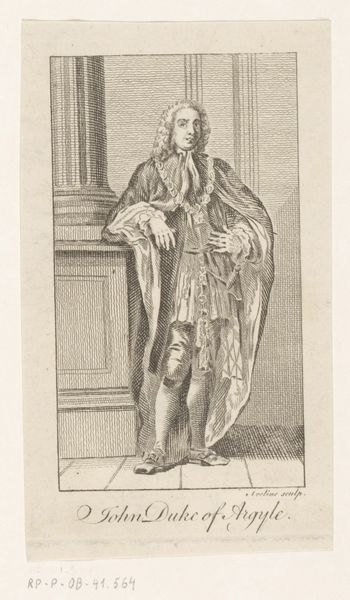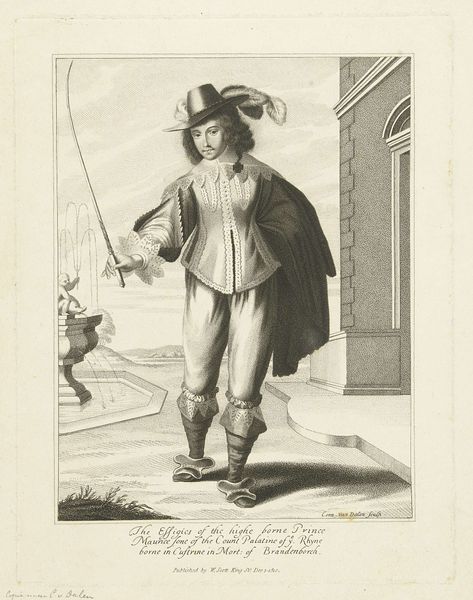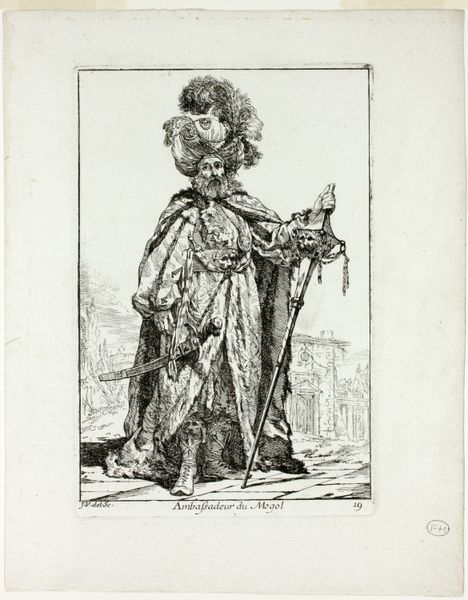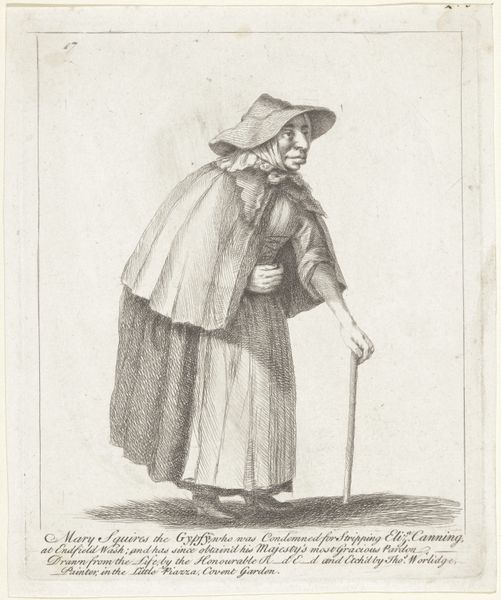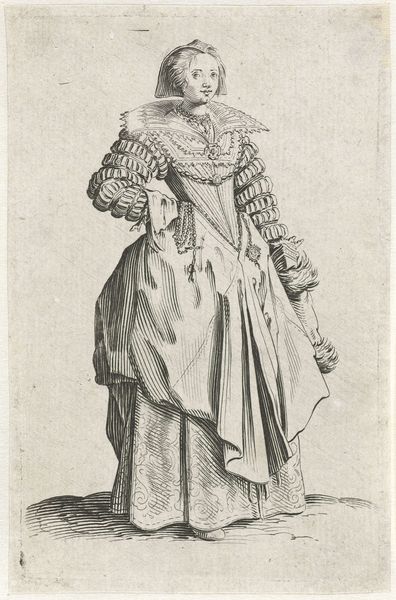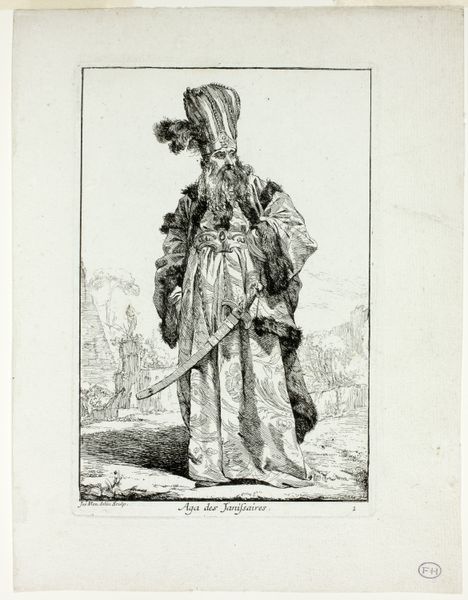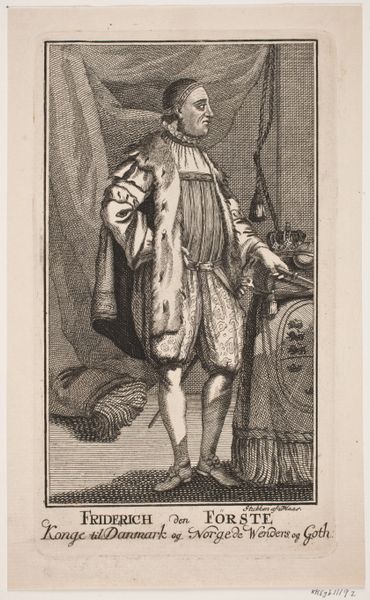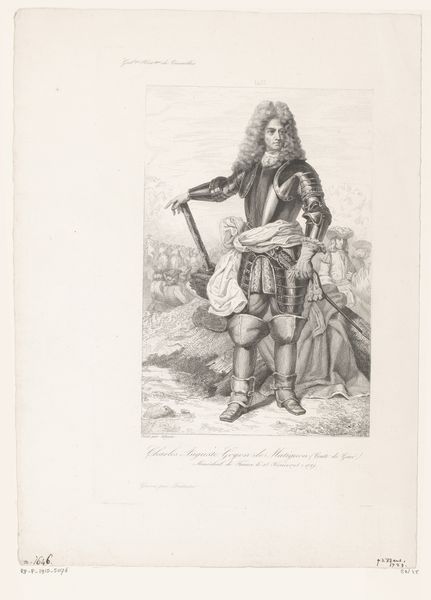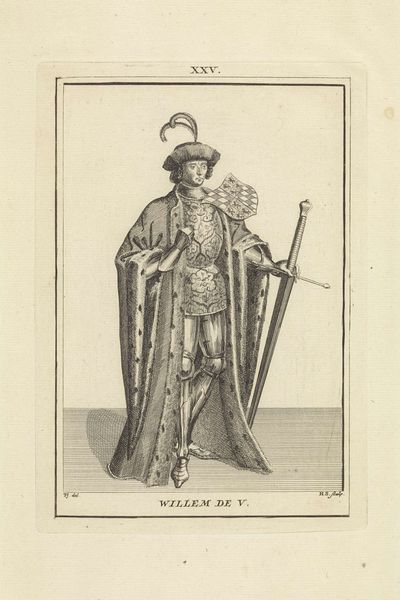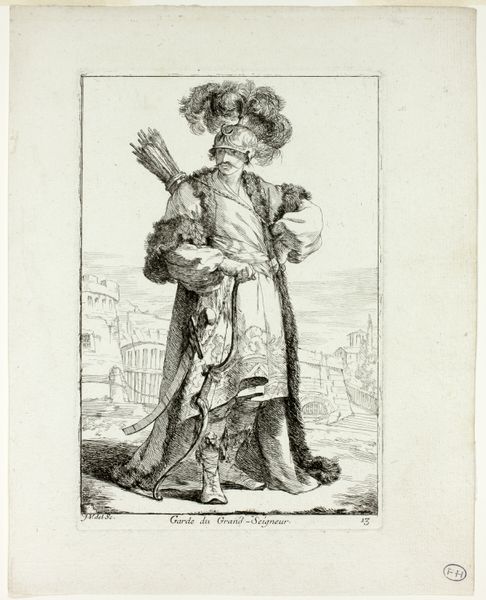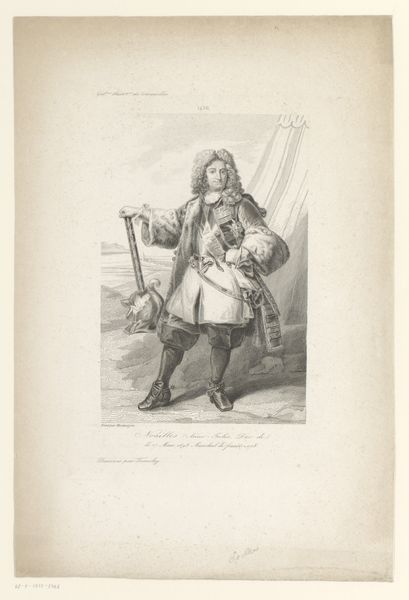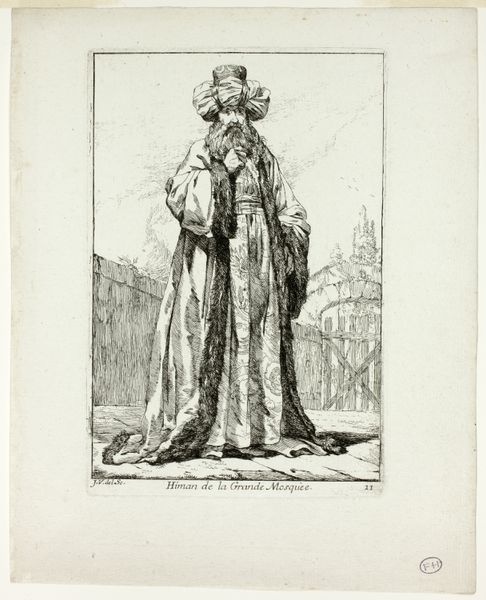
engraving
#
portrait
#
medieval
#
old engraving style
#
history-painting
#
academic-art
#
engraving
#
realism
Dimensions: height 261 mm, width 188 mm
Copyright: Rijks Museum: Open Domain
Curator: Allow me to introduce to you the “Portret van Filips de Goede,” or “Portrait of Philip the Good,” an engraving created between 1838 and 1841 by J. Leclerc. It renders its subject, the Duke of Burgundy, in the full regalia of his office. Editor: It’s quite imposing! The scale is grand, even in this smaller engraved form, and there is a tangible somber mood despite the detailed attire and regal symbols. The composition, from the duke's posture to the heraldic shield, creates a visual assertion of power and control. Curator: Absolutely. Observe how the artist uses line and shadow to define not only the textures of the fabrics and metalwork but also to convey the sitter's solemnity. The weight of governance is palpable in the downward curve of his mouth and brow, subtly reinforced by the textural complexity surrounding the central, smooth expanse of his face. Editor: Speaking of textures, the material processes jump out here. Engraving allows for incredibly fine detail. It would be interesting to consider the economic implications of such elaborate, hand-rendered artworks intended for circulation. Each print necessitates labor, and, therefore, makes it clear the distinction between the haves and have-nots—Philip and his subjects. Curator: True, the circulation of these prints solidifies cultural ideas. But looking beyond labor, one can decode much by attending to symbolism: consider the sword he holds, a signifier of both power and justice, balanced with the heraldic shield at his side which denotes familial history and claims of legacy. These aren't merely decorative elements, but rather tools within the language of power. Editor: But even these symbolic markers required a great deal of skill to realize materially. Look closely, and you can appreciate the ways in which Leclerc’s engraving practice elevated this kind of illustrative piece. Curator: Leclerc masterfully employs artistic strategies to build up a convincing presence. What strikes me is not merely the accuracy but how such techniques contribute to conveying cultural ideas related to power, privilege, and tradition. Editor: Indeed, we are seeing a crafted representation steeped in materials and the making of its context. Curator: A potent confluence of artistry, technique, and representation. Editor: A testament to both artistry and tangible production in their historical moment.
Comments
No comments
Be the first to comment and join the conversation on the ultimate creative platform.

